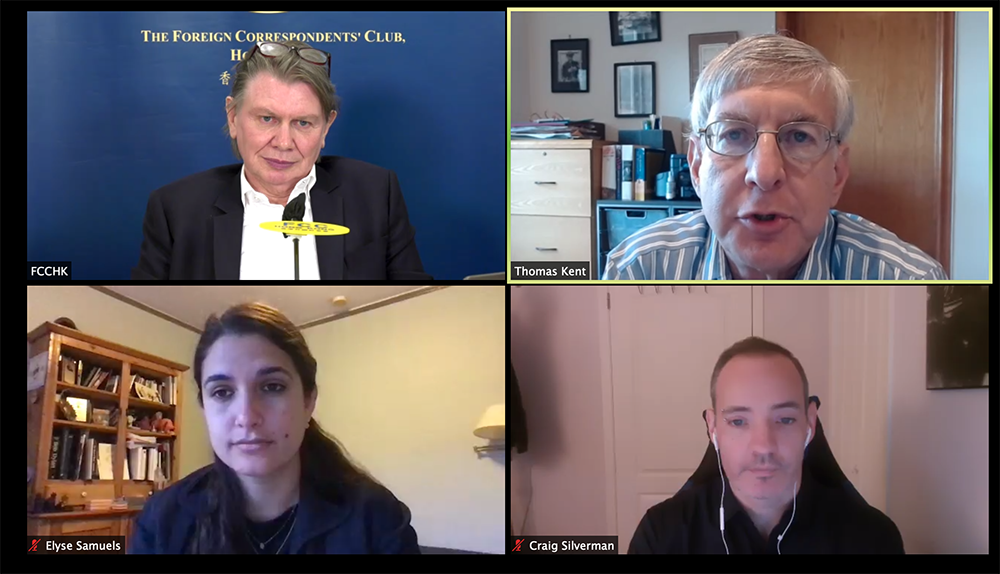
U.S. election disinformation worse than ever – Craig Silverman
The spread of disinformation and fake news is far worse than four years ago and is fuelling a deluge of lies in the run-up to the U.S. election, Buzzfeed media editor Craig Silverman said in an FCC panel discussion.
Silverman, creator of the Verification Handbook – For Disinformation and Media Manipulation, appeared with Elyse Samuels, video reporter for the Washington Post’s visual forensics team; and Thomas Kent, former president and CEO of Radio Free Europe/Radio Liberty and author of Striking Back: Overt and Covert Options to Combat Russian Disinformation in the October 15 webinar.
He said that conspiracy theories and an alternate reality ecosystem had flourished on the internet since the last election. In 2016, social media platforms were criticised for disseminating fake news ahead of the election of President Donald Trump.
“What’s incredible to me is thinking about what I was seeing in 2016 in the U.S. and how that just felt like an incredible high watermark for conspiratorial thinking infecting the mainstream, for viral falsehoods, gathering a huge amount of attention and interactions… And all of that seemed like ‘how could it get worse?’, and here we are,” Silverman said.
He criticised social media platforms for not doing enough to curb the continued rise of disinformation and fake news on their sites.
Twitter and Facebook were late to act against the spread of fake news due to a sense of American “free speech”. He said the firms were led by people “very much in favour of leaving up rather than taking down”.
Silverman acknowledged that platforms were beginning to crack down on disinformation. However, highlighting Facebook’s recent commitment not to accept political ads after the U.S. election polls close on November 3, he added: “It’s fair to point out a lot of this stuff is coming very close to the election. They’ve had four years and while they’re banking massive profits they have not really invested as much as they could have.”
Samuels discussed the rise in deep fakes – manipulated videos or photos – with the most common form being clips used out of context. As an example, she spoke of the recent controversy surrounding a Donald Trump campaign video in which White House coronavirus advisor Dr. Anthony Fauci appears to praise the president’s response to the COVID-19 pandemic. Dr. Fauci subsequently issued a statement saying his quote was taken out of context.
“It just shows how easy it is to take something out of context and change the narrative,” Samuels said.
She conceded that once a video clip had gone viral it was “harder to put the genie back into the bottle” but added that she hoped articles that debunked misinformation were having a positive effect.
Samuels said both the Trump and Biden campaigns were guilty of spreading disinformation, although she said there were more instances of the Trump campaign using this strategy.
Kent discussed interference in elections by Russia. Although the Kremlin was widely believed to have helped elect Trump in 2016, Kent argued that Russia is also “on the other side too”. He cited Russian-created content that was both critical and supportive of the Black Lives Matter movement.
“You can look at this in two ways: the classical explanation of this would be that the Russians are trying to hedge their bets, to have some allies on both sides depending on who wins the election,” he said. “However, the general thrust of Russian information operations in the United States has not been aimed particularly at making allies for Russia anywhere. Instead, it’s been aimed at sewing disruption in general in U.S. society.”
Kent suggested one solution to the divisive spread of disinformation was to change the way people think about politics and democratic values.
“The problem is we are too defensive; we spend all our time saying don’t believe this don’t believe that… If you want to affect the way people think about politics you need to present a positive message as well as a negative message,” he said.
Watch the video




















